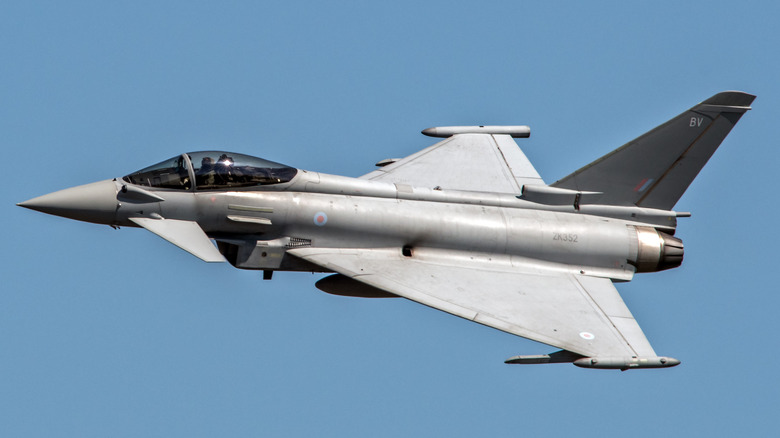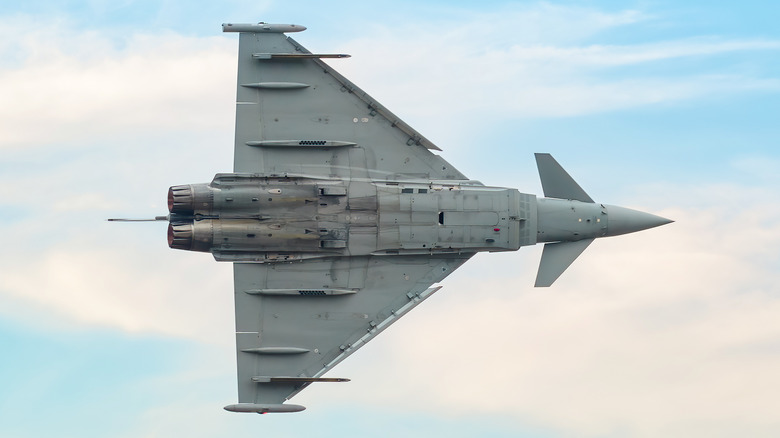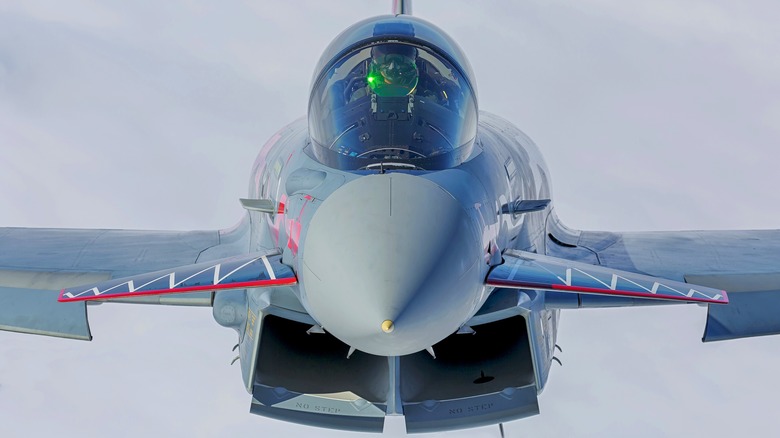The Biggest Strengths And Weaknesses Of The Eurofighter Typhoon Jet
During the height of the Cold War, European countries were looking to create aircraft that could counter and exceed Soviet fighters' capabilities. Wisely, a group of nations banded together on the project as their leaders recognized the added strength of combining resources. The United Kingdom, Italy, and Germany created the EFA, or European Fighter Aircraft group, in the mid-1980s. At the time, U.S. fighter jets weren't an option due to their higher cost and Europe's desire to build and maintain its own manufacturing infrastructure.
After almost a decade, several tests, various prototypes, and redesigns, the Eurofighter 2000(later changed to Typhoon) was born. Fast-forward to today, and according to Leonardo Aurcraft, 680 Typhoons are operating in countries throughout Europe and the Middle East.
However, there does seem to be a strong divide between Eurofighter Typhoon proponents and those who oppose it. So, what does this fighter jet bring to the skies over the modern battlefield, and what shortcomings hold it back? Over the decades, aircraft have made increasing advancements, including the Eurofighter Typhoon and several of the best fighter planes and jets of all time.
What makes the Typhoon remarkable?
With cutting-edge and imposing jets like the U.S. F-22 Raptor, F-35 Lightning II, and F-15 Eagle, competition is stiff in the combat aviation world. Fortunately, the Eurofighter Typhoon isn't a slouch when it comes to its performance abilities or the range of missions it can tackle successfully.
This jet's unique design, including canards (small wing-like structures near the nose), was intentionally crafted to cause aerodynamic instability. The Typhoon's wings extend far backward near the tail, and the canards help enhance maneuverability while giving the jet an unmistakable look. So why did engineers create an aircraft whose shape clearly defied modern, streamlined construction? Because this odd configuration actually offers greater directional mobility at or below supersonic speeds and, in the case of the Typhoon, a superior turn rate.
The Eurofighter Typhoon is a jack of all trades in that it can adeptly handle targets up close or from great distances and is competent in both aerial and air-to-ground combat. One of the areas in which it excels beyond the F-22 Raptor, for instance, is its superior range. The Raptor has a range of around 2,259 miles, while the Typhoon is greater at 2,356 miles.
The downsides of the Typhoon fighter
While the European jet offers a lot of versatility in terms of mission options, it doesn't perform air-to-air combat equal to 5th-generation fighters like the F-22. In fact, according to ausairpower.net, the Typhoon was found to be 82% as capable as a F-22 Raptor. However, to be fair, the Raptor exists for one primary purpose: exceptional dogfighting.
Another disadvantage of the Typhoon is its weaker angle of attack in comparison with other jets such as the Rafale. The angle of attack refers to the orientation of aircraft wings versus the flow of air. If an aircraft goes beyond the rated angle of attack, it could result in a stall. The Typhoon can't push past 70 degrees, whereas the Rafale, for example, can handle upwards of 110 degrees.
In terms of stealth, the Typhoon is also behind the nearly invisible F-22 Raptor, which incorporates the latest radar masking technology. While the Typhoon isn't the sneakiest aircraft, these are the best stealth jets ever built.


